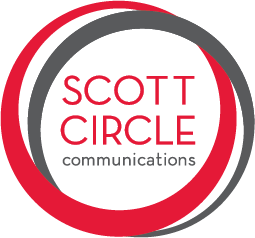Upgrade Your Media List: Tips And Tricks To Find the Right Contacts
Building a media list is critical to any outreach - a database of relevant contacts to reach out to when promoting a campaign, press release or offering interviews. A media list should be more than a list of journalist names and the coverage beat they’ve been assigned. To be truly effective and useful, your list needs to be tailored to meet your needs and subject areas, and should always serve as a living document that needs to be updated and refreshed over the course of a project. Defining your audience and target area, identifying influencers or experts, and utilizing digital platforms will set you on your way to creating a useful media list! Here are some ways to build an impactful media list that ensure you are reaching out to the right targets who will be most interested in covering your story.
Start with the Known
Utilize what is already available and begin by identifying outlets or members of the press who have already written about the organization, campaign or issue in the past. This will help you identify industry trades, beat reporters, and local outlets or press who are already familiar with what you are pitching, and may be interested in a follow up story. Identify influencers or experts who have already shown some sort of interest in your topic. These could be great targets who could lend their voice and platform and uplift your message. This can be further augmented by starting media monitoring. By commencing media monitoring you can see who is publishing content on your topic, and add them to your list, while also following trends that will ultimately help structure your outreach. This will also set you up for success down the road by creating a baseline for coverage and identifying topics that are of interest to the public
Go Big (But Don’t Ignore the Small)
If the media list is being built for national coverage, search for national outlets with a presence in your area such as AP bureaus or NPR affiliates. Go from big to small and back again. Consider large outlets that are well known and drill down from there. Not every campaign is going to land on the cover of the New York Times, and smaller more targeted outlets can be an excellent source of coverage. Local stories can contribute to trends that gain national traction. Plus, there’s always opportunities for compelling local stories to get picked up or syndicated nationally as well.
Use Digital Platforms
Journalist database platforms, like Cision or Muck Rack, organize and host a wealth of information about journalists and news outlets. Searching by subject area or beat allows you to identify journalists who you are not aware of, but are key players in the space. Google keywords and alerts can supplement these searches by alerting when new articles have been published on related topics. Add those journalists to the database and make a note of the article they published - you can potentially use this in your outreach to show that you are well versed in the subject and have been paying attention. It is always better to come in showing that you have done your research, which may allow for an “in” with the journalist. Lastly, a simple search of Twitter can lead you to members of the press who are interested in your subject and/or are publishing content around your keywords.
Leave A Breadcrumb Trail
Leave notes for yourself: what are the journalists preferences on how to be contacted (phone call vs. email), do you have a connection to the outlet or journalist? Notes will allow you to come back to the list in the future and quickly understand which individuals present the best opportunity for content. Additionally, don’t be afraid to reach out. Contact press through email, or try reaching out and engaging over social media to build a relationship. Still no luck? See if they have a personal website or submit a query to the outlet's general contact account. Due diligence is free and will take you far!
With these simple tips and tricks you are already on your way to creating a useful media list!
